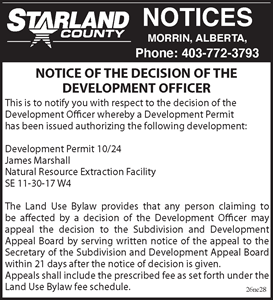
Romance is a funny thing, sometimes it is a slow burn, sometimes it's like lightning, and you can never tell what will be the spark.
For Mike Bell, it was the big smile and the outgoing personality of the checkout girl at the supermarket.
Bell had set himself on a road to success. After leaving high school, he worked for CP Hotels, and he came back to the valley to help teach skiing. After putting in long shifts as a delivery driver, he tried his hand at car sales and was doing well.
He had even thrown his hat into the ring to become Mayor.
It was around this time he noticed Courtney at the IGA in downtown Drumheller.
“She worked at IGA. I was just going through her till, and she was so upbeat and positive," he recalls. “One day, I was just driving over the hill by the Drumheller Inn, and she passed me in her little red Sprint, and she waved to me. “
It made an impression on Mike, and he kept her in his mind. His brother Chris was dating one of Courteny's friends, and she was invited to a party at his home.
And that started a 20-year relationship. They started dating, and Mike says he never looked back.
Mike had travelled with his family as a youngster, and he shared that with Courtney. They went on vacations to San Francisco and Mexico.
“She had never been out of the country and never been on a plane,” said Mike.
He believed his confidence and sense of humour helped him as they courted. Also, meeting young, they were able to grow and mature together.
He also was courteous. He knew that Courtney did not want a lavish proposal, so he popped the question in the kitchen of their house on St. Patrick’s Day.
The couple were married in 2004 at the Church of the Nazarene and held their reception at the Stampede Barn.
Their family grew, and they have two children, Harper and Hudson.
When asked the secret to their 20 years together, he responded, keeping each other laughing.
“We really do enjoy each other’s company. People say to marry your best friend, and I feel like this is what I did. And we are better friends today than when we got married,” he said.
With one child at college and the other midway through high school, he says they have even more time to spend together.
“I am very lucky to have her in my life,” he said.































